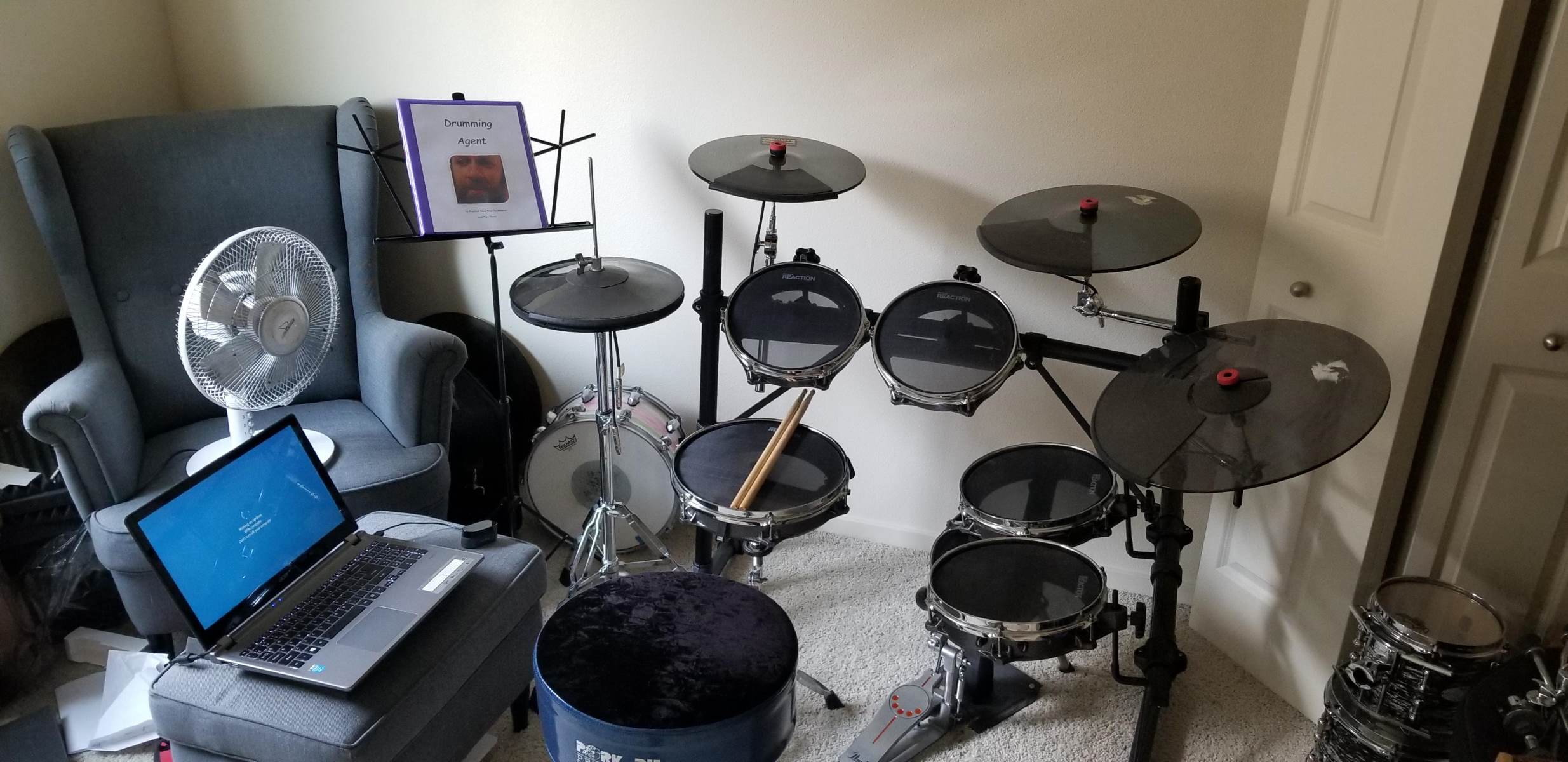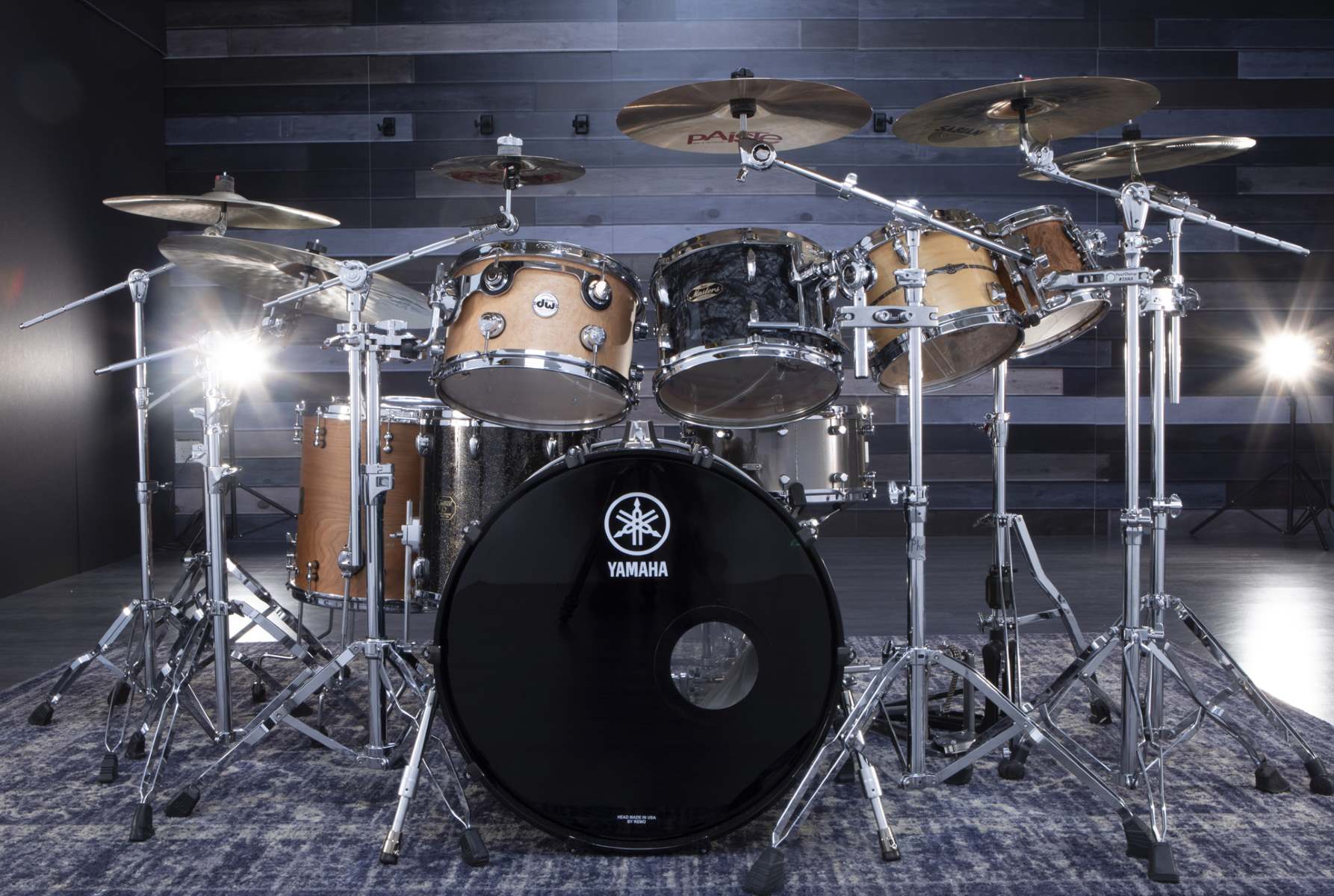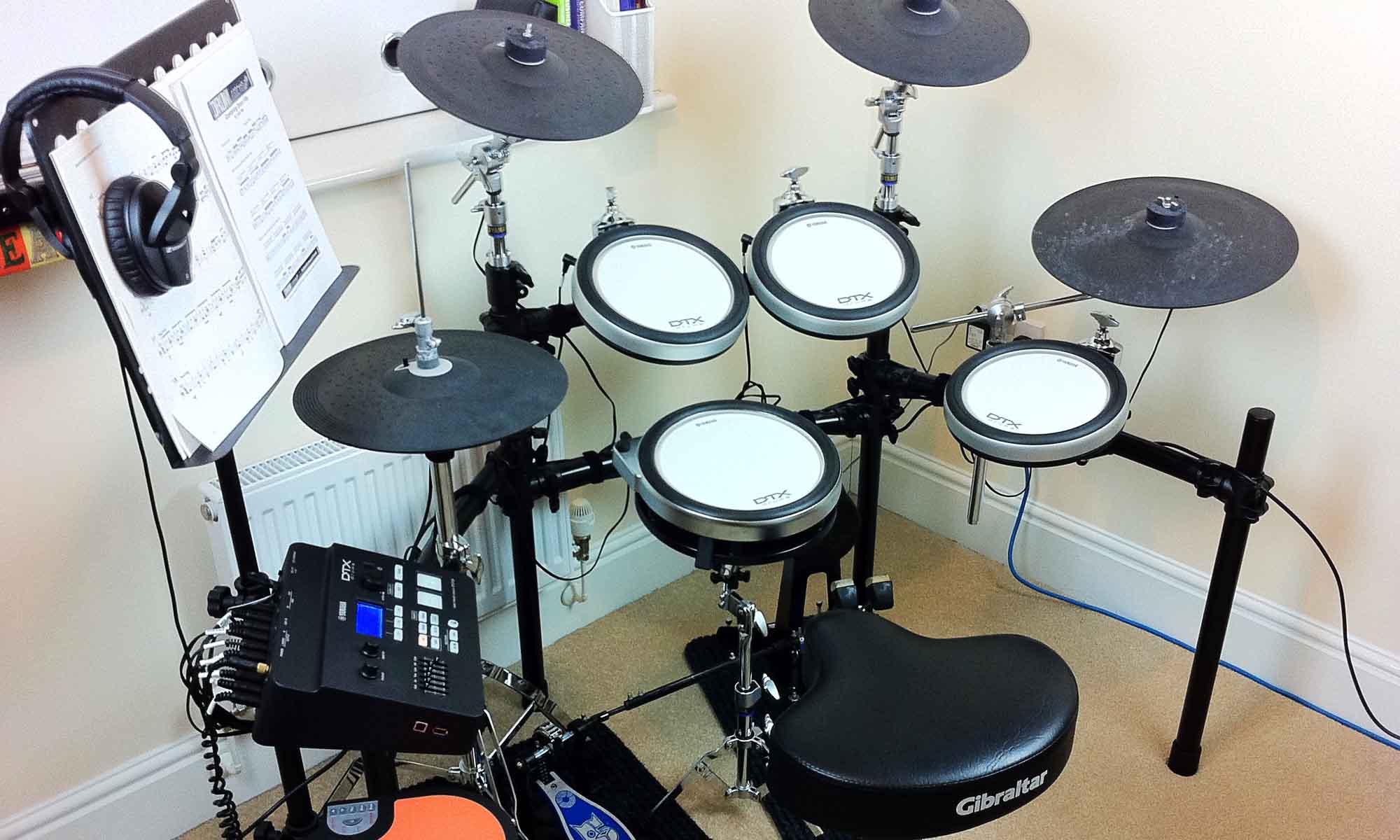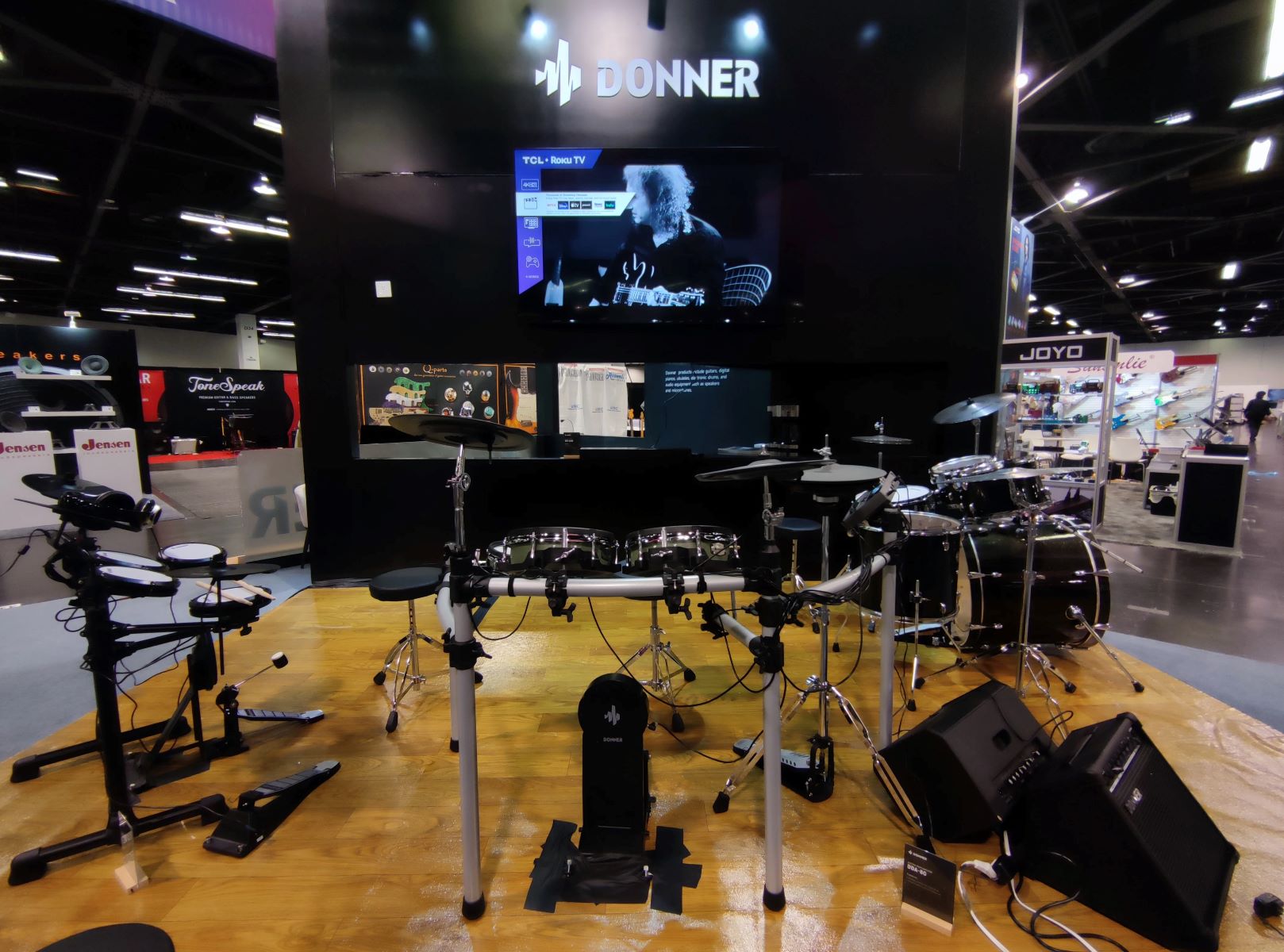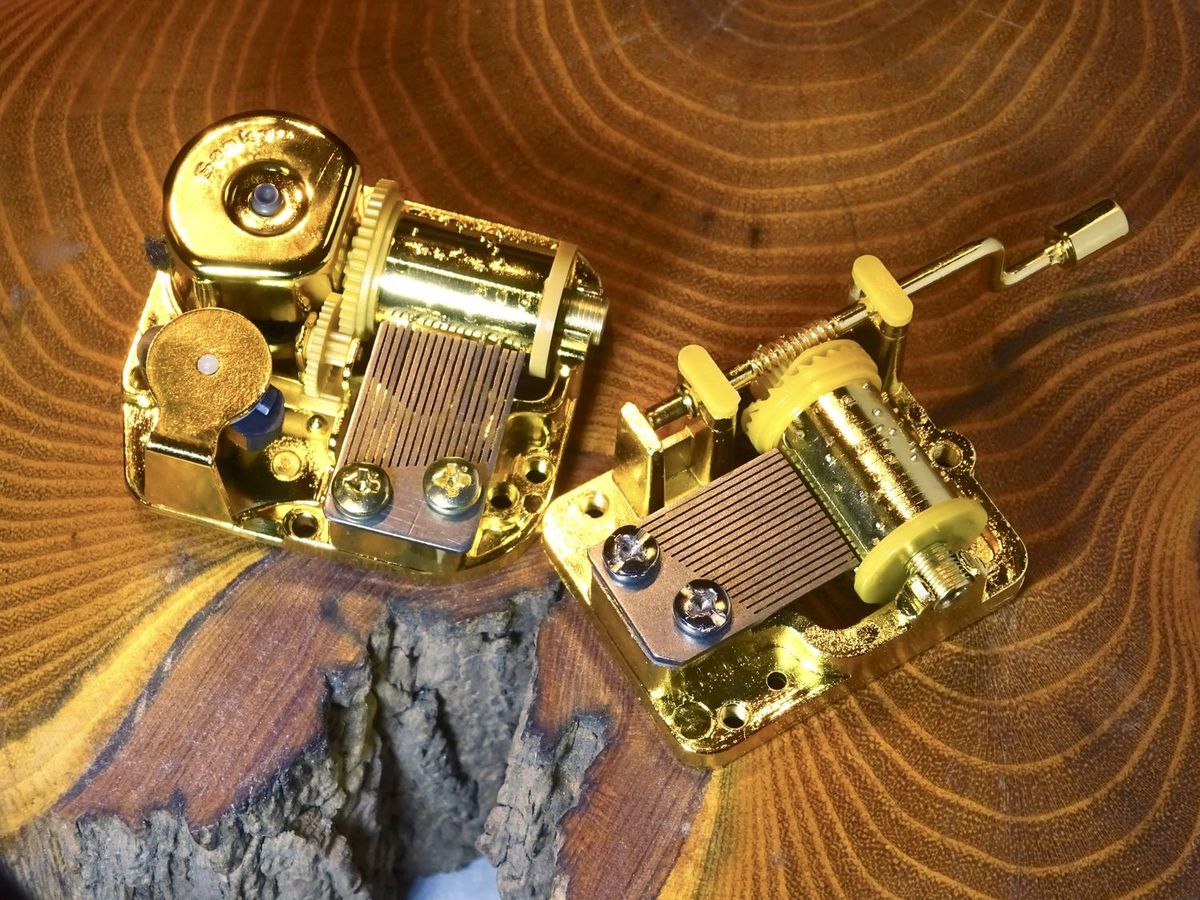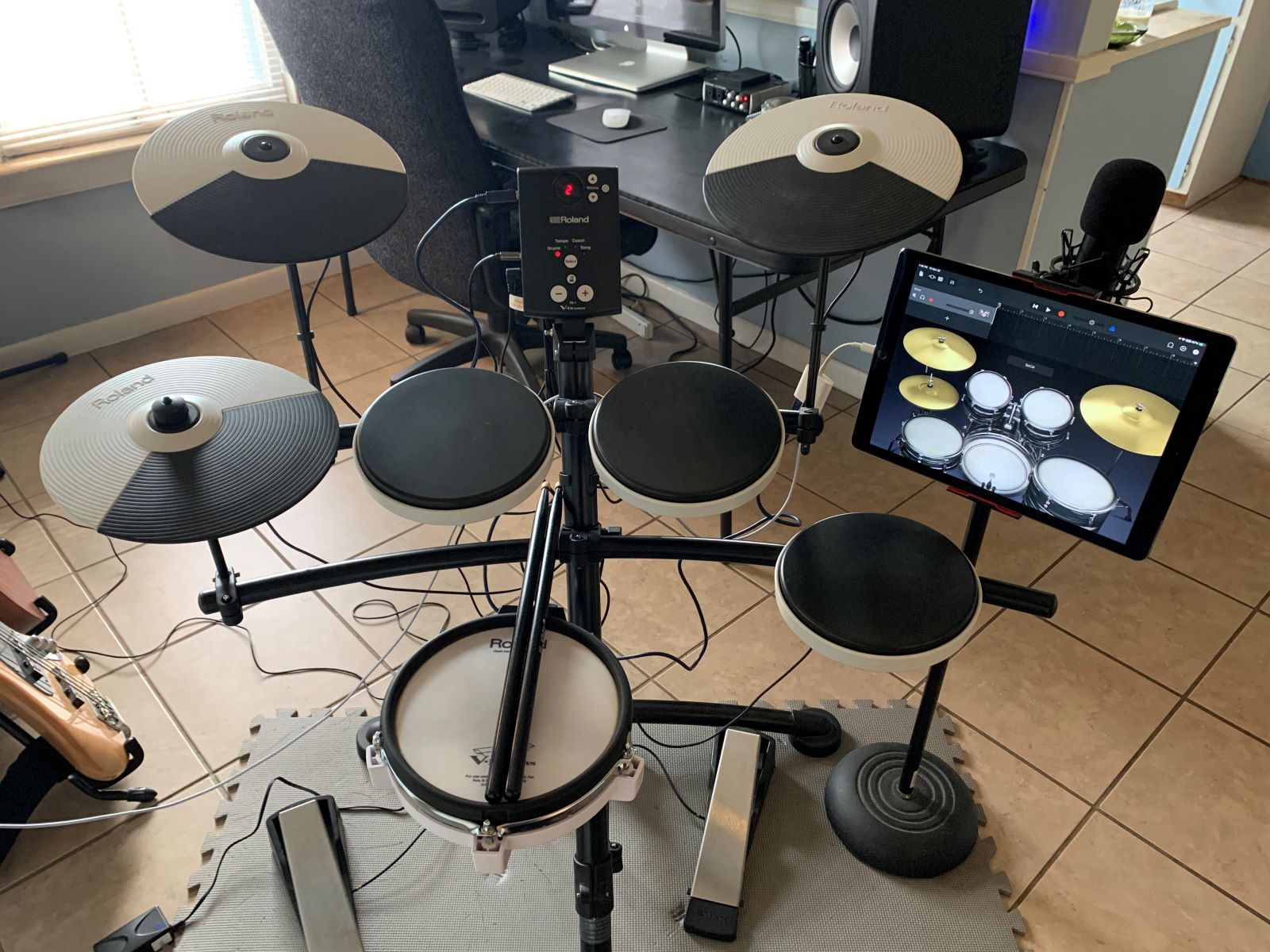Home>Instruments>Drums>How To Make Electronic Drums Sound Better
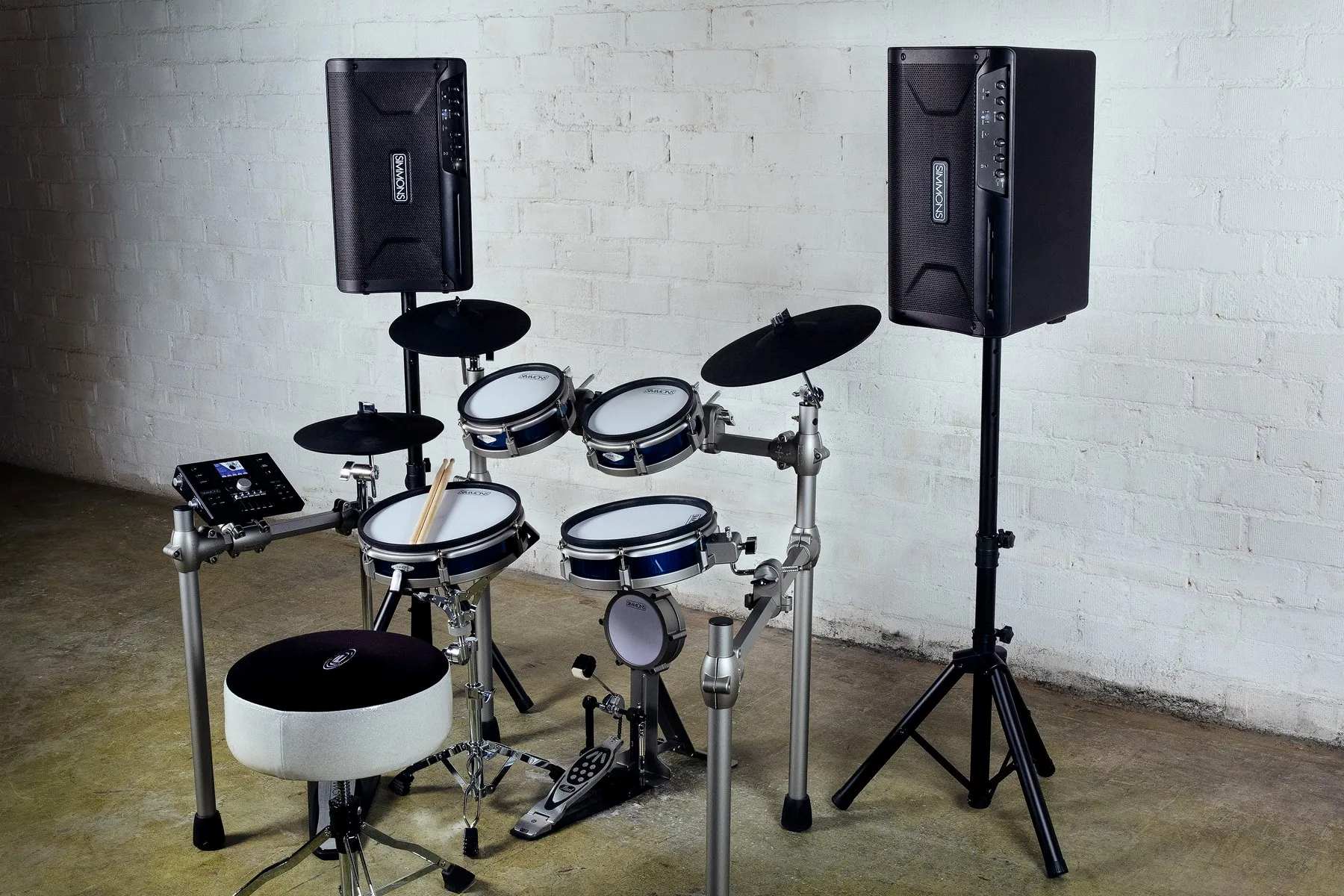

Drums
How To Make Electronic Drums Sound Better
Published: February 7, 2024
Learn how to enhance the sound of electronic drums with our expert tips and techniques. Improve your drumming experience and get the most out of your drum kit. Discover how to make your drums sound better today!
(Many of the links in this article redirect to a specific reviewed product. Your purchase of these products through affiliate links helps to generate commission for AudioLover.com, at no extra cost. Learn more)
Table of Contents
Introduction
Electronic drums have revolutionized the world of percussion, offering a versatile and dynamic way to create and perform music. Whether you’re a seasoned drummer looking to expand your sonic horizons or a budding musician eager to explore the possibilities of electronic percussion, there are numerous ways to enhance the sound and playability of electronic drum kits.
In this comprehensive guide, we’ll delve into the techniques and strategies that can help you make your electronic drums sound better. From selecting the right electronic drum set to fine-tuning its sound, adding effects and processing, adjusting dynamics and sensitivity, and utilizing high-quality samples and sound libraries, we’ll explore a range of methods to take your electronic drumming experience to the next level.
While electronic drums offer a wide array of sounds and features straight out of the box, there are several factors to consider in order to optimize their performance and sonic potential. By understanding the nuances of electronic drum technology and implementing the tips and tricks outlined in this guide, you can unlock a world of sonic possibilities and elevate your drumming to new heights.
Whether you’re aiming to achieve a natural and organic drum sound, experiment with electronic textures and effects, or emulate the sounds of classic acoustic drum kits, the following sections will provide valuable insights and practical advice for enhancing the sound and feel of your electronic drums. Let’s embark on this sonic journey and discover the secrets to making electronic drums sound better.
Choosing the Right Electronic Drum Set
When it comes to making electronic drums sound better, selecting the right drum set is a crucial first step. With a myriad of options available in the market, it’s essential to consider several factors to ensure that the electronic drum kit aligns with your musical preferences, performance requirements, and sonic aspirations.
First and foremost, consider the type of pads and triggers offered by the electronic drum set. High-quality mesh pads can provide a more realistic and responsive playing experience, offering a natural feel akin to acoustic drums. Additionally, the sensitivity and responsiveness of the drum triggers play a significant role in shaping the expressiveness and dynamics of your playing, so it’s important to choose a set with reliable and accurate trigger technology.
Another crucial aspect to consider is the sound module or drum brain that accompanies the electronic drum set. The sound module serves as the heart of the electronic drum kit, housing a diverse range of drum sounds, samples, and digital effects. Look for a sound module that offers a wide selection of high-fidelity sounds, customizable kits, and intuitive controls for shaping and fine-tuning the drum tones to your liking.
Furthermore, the build quality and durability of the electronic drum set should not be overlooked. Robust hardware, sturdy rack systems, and ergonomic design contribute to the overall playability and reliability of the kit, ensuring that it can withstand the rigors of regular practice and performance.
Consider your specific musical goals and playing environment when choosing an electronic drum set. Whether you require a compact and portable kit for home practice and small venues, or a comprehensive setup with an expansive array of pads and cymbals for studio recording and live performances, there are electronic drum kits tailored to various musical contexts and playing styles.
By carefully evaluating the pad and trigger technology, sound module capabilities, build quality, and suitability for your musical endeavors, you can make an informed decision when choosing the right electronic drum set. With a well-suited drum kit as the foundation, you can embark on the journey of optimizing and enhancing the sound of your electronic drums with confidence and excitement.
Tuning Your Electronic Drums
While electronic drums don’t require traditional tuning in the same way acoustic drums do, they can benefit from meticulous adjustment to ensure optimal sound quality and playability. Tuning electronic drums involves refining the settings and parameters of the sound module, as well as customizing the response and feel of the drum pads and triggers.
Begin by exploring the sound editing capabilities of the drum module. Many electronic drum sound modules offer extensive editing features, allowing you to adjust parameters such as pitch, decay, reverb, and EQ for individual drum voices. By fine-tuning these settings, you can sculpt the sonic characteristics of each drum sound to suit your preferences and musical context.
Additionally, take advantage of the sensitivity and response settings available on the drum module to tailor the dynamic range and triggering behavior of the drum pads. Adjusting the sensitivity ensures that the pads respond accurately to your playing dynamics, capturing subtle nuances and powerful strikes with precision. Furthermore, refining the response curve of the pads can enhance the natural feel and playability of the electronic drums, mimicking the responsiveness of acoustic drum heads.
When it comes to customizing the feel and response of the drum pads, consider experimenting with the tension and rebound of mesh heads, if applicable. Many modern electronic drum pads feature adjustable tension settings, allowing you to emulate the feel of tight or loose drumheads based on your playing preferences. By finding the optimal tension and rebound characteristics, you can enhance the tactile experience of playing electronic drums and achieve a more expressive and responsive performance.
Regular maintenance and calibration of the drum triggers is also essential for ensuring consistent and accurate performance. Periodically check and adjust the trigger settings to eliminate double triggering, crosstalk, or latency issues, thereby maintaining the integrity and reliability of the electronic drum kit.
By delving into the tuning and customization options available for electronic drums, you can refine the sound, feel, and responsiveness of the kit to align with your artistic vision and playing style. Whether you aim to achieve a natural and organic drumming experience or explore innovative electronic textures, tuning your electronic drums can significantly contribute to enhancing their sonic potential and playability.
Adding Effects and Processing
Enhancing the sonic palette of electronic drums can be achieved through the strategic application of effects and processing. By incorporating digital effects, signal processing, and audio manipulation techniques, you can elevate the texture, depth, and character of electronic drum sounds, opening up a world of creative possibilities.
One of the primary methods for enhancing electronic drum sounds is the utilization of onboard effects within the drum module or external effects processors. Reverb, delay, modulation, and distortion are among the commonly used effects that can add spatial dimension, ambience, and sonic richness to individual drum voices and overall drum kit sounds. Experimenting with different effect combinations and settings allows you to sculpt unique and immersive drum textures that complement various musical styles and genres.
Furthermore, consider integrating dynamic processing tools such as compressors, equalizers, and transient shapers into the signal chain of electronic drums. Compression can help control the dynamic range and sustain of drum sounds, ensuring a consistent and impactful sonic presence. Equalization allows for precise shaping of the frequency response, enabling you to emphasize or attenuate specific tonal characteristics of the drum voices. Transient shaping tools can modify the attack and decay of drum sounds, enhancing punch and clarity for individual elements within the drum mix.
Another avenue for expanding the sonic capabilities of electronic drums is the incorporation of electronic drum triggers and pads into a digital audio workstation (DAW) environment. By interfacing the electronic drum kit with a computer-based recording setup, you can leverage an extensive range of virtual instruments, effects plugins, and processing tools to augment and refine the drum sounds. This integration enables you to access a vast library of high-quality samples, synthesizer sounds, and audio processing plugins, empowering you to tailor the electronic drum tones with unparalleled flexibility and creativity.
Experimentation and exploration are key when adding effects and processing to electronic drums. By venturing into the realm of sound design and audio manipulation, you can transform the sonic identity of electronic drum voices, infusing them with depth, character, and expressive qualities that transcend the confines of traditional drum sounds. Whether you seek to evoke cinematic atmospheres, futuristic textures, or classic analog warmth, the realm of effects and processing offers boundless opportunities for shaping and enriching the sonic landscape of electronic drums.
Adjusting Dynamics and Sensitivity
Refining the dynamics and sensitivity of electronic drums is pivotal in achieving expressive and nuanced performances. By customizing the response characteristics and dynamic range of the drum pads and triggers, you can imbue your playing with subtlety, power, and articulation, akin to acoustic drumming.
One of the fundamental aspects of adjusting dynamics on electronic drums involves fine-tuning the velocity response of the pads. Velocity sensitivity dictates how the intensity of your strikes translates into variations in sound volume and timbre. By calibrating the velocity curves and sensitivity settings of the drum triggers, you can ensure that soft taps yield gentle tones while more forceful hits produce pronounced and dynamic sounds, enabling you to convey a wide range of musical expression through your playing.
Moreover, consider exploring the articulation and cross-talk settings available on the electronic drum module. Articulation settings allow you to control the responsiveness and tonal variations produced by different playing techniques, such as ghost notes, rimshots, and cross-stick articulations. By adjusting these parameters, you can emulate the intricate nuances and articulatory subtleties inherent to acoustic drumming, enriching the authenticity and musicality of electronic drum performances.
Additionally, sensitivity adjustments play a crucial role in mitigating unintended triggering and ensuring accurate response from the drum pads. Fine-tune the sensitivity levels to eliminate false triggers, double hits, or missed strokes, thereby enhancing the precision and reliability of the electronic drum kit during live performances, studio recordings, and practice sessions.
Exploring the dynamic and sensitivity settings of electronic drums can also involve experimenting with positional sensing, if supported by the drum pads. Positional sensing technology detects the placement of your strikes on the drum surface, allowing for nuanced variations in sound based on the striking location. By harnessing positional sensing capabilities, you can emulate the tonal changes and timbral shifts that occur when striking different areas of an acoustic drum, adding a heightened level of expressiveness and realism to your electronic drum performances.
By delving into the realm of dynamics and sensitivity adjustments, you can elevate the playability, expressiveness, and authenticity of electronic drums, enabling you to deliver performances that resonate with musicality and emotion. Whether you aspire to replicate the finesse of jazz drumming, the power of rock beats, or the subtleties of world percussion, the art of adjusting dynamics and sensitivity on electronic drums empowers you to shape and articulate your musical voice with precision and finesse.
Using Quality Samples and Sound Libraries
Accessing high-quality samples and sound libraries is a transformative approach to enriching the sonic landscape of electronic drums. By integrating premium sound sources and expansive libraries into your electronic drum setup, you can elevate the authenticity, diversity, and sonic fidelity of the drum sounds, opening up a vast realm of creative possibilities.
One of the primary avenues for augmenting electronic drum sounds is the utilization of professionally recorded and meticulously crafted drum samples. Acquiring sample packs that encompass a wide range of drum types, articulations, and playing styles enables you to infuse your electronic drum performances with the sonic characteristics and nuances of acoustic drums. From crisp snares and thunderous kick drums to shimmering cymbals and resonant toms, quality drum samples provide a rich sonic foundation for shaping expressive and dynamic drum performances.
Furthermore, consider integrating sound libraries that offer diverse percussion instruments, exotic ethnic drums, and hybrid electronic textures. By incorporating an array of world percussion sounds, electronic effects, and unconventional rhythmic elements into your electronic drum palette, you can expand the sonic horizons and creative potential of your drumming, transcending traditional boundaries and venturing into uncharted sonic territories.
Another valuable resource for enhancing electronic drum sounds is the utilization of sound design tools and synthesizer libraries. By leveraging synthesis techniques, sound shaping modules, and virtual instrument plugins, you can sculpt unique and innovative drum textures, from futuristic electronic beats to otherworldly percussive elements. This approach empowers you to infuse your electronic drum performances with originality and sonic character, fostering a distinctive sonic identity that sets your drumming apart.
Integrating quality samples and sound libraries into your electronic drum setup also extends to the realm of electronic dance music (EDM) and electronic production. By incorporating electronic drum kits, percussion loops, and cutting-edge sound design elements tailored for electronic music genres, you can harness the rhythmic energy, drive, and sonic impact that define contemporary electronic music productions, allowing your electronic drum performances to resonate with modern sonic aesthetics and production standards.
By leveraging quality samples, sound libraries, and sound design tools, you can transcend the sonic limitations of traditional drum sounds and unlock a universe of creative potential within your electronic drum performances. Whether you seek to evoke the organic warmth of acoustic drums, explore avant-garde sonic textures, or infuse your drumming with the rhythmic vitality of electronic music, the realm of quality samples and sound libraries offers a boundless sonic canvas for shaping and defining your electronic drumming experience.
Conclusion
Embarking on the journey to make electronic drums sound better is a rewarding pursuit that encompasses a diverse array of techniques, tools, and creative approaches. By delving into the nuances of electronic drum technology and sound design, you can elevate the sonic potential and expressive capabilities of electronic drums, enabling you to craft immersive and captivating drum performances across various musical genres and contexts.
From the foundational step of choosing the right electronic drum set to the intricacies of tuning the sound, refining dynamics, incorporating effects, and leveraging quality samples, each facet of the electronic drumming experience presents opportunities for exploration, experimentation, and sonic refinement. Whether you aspire to emulate the organic warmth and playability of acoustic drums, explore innovative electronic textures, or push the boundaries of rhythmic expression, the realm of electronic drumming offers a boundless canvas for artistic expression and sonic creativity.
As you navigate the realm of electronic drumming, remember that the pursuit of sonic excellence is a dynamic and ongoing endeavor. Continuously refining your playing technique, exploring new soundscapes, and harnessing the evolving capabilities of electronic drum technology can lead to a rich and fulfilling musical journey, marked by sonic innovation and expressive growth.
Ultimately, the art of making electronic drums sound better is a fusion of technical finesse, artistic vision, and sonic imagination. By embracing the tools and techniques outlined in this guide, you can unlock the full potential of electronic drums, shaping them into a versatile and expressive instrument that resonates with your musical identity and creative aspirations.
So, whether you’re crafting intricate rhythms in the studio, delivering dynamic performances on stage, or honing your skills in the practice room, the realm of electronic drumming invites you to explore, innovate, and create sonic experiences that transcend traditional boundaries and resonate with the pulse of modern music.
Embrace the artistry of electronic drumming, and let the boundless realm of sonic possibilities inspire your musical journey.

